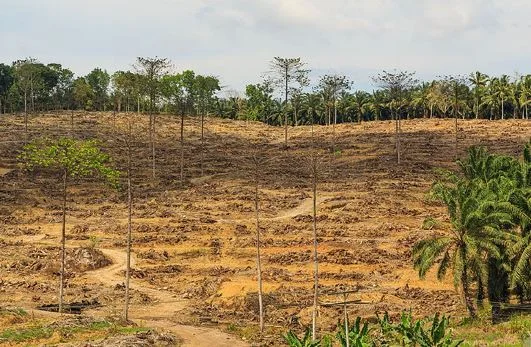Imagine a life without Palm Oil – this would include bread, toothpaste, shampoo, biofuel,
ice cream and many more of your everyday products. Difficult, or perhaps impossible to imagine?
Palm oil is the most commonly used vegetable oil in the world and is booming in its global
demand. This is the revelation farmers and production companies are beginning to seize in
response.
As oil palms only grow in the tropics due to their need for water and high temperatures,
plantations are spreading across the west to Papua New Guinea, parts of Asia, Kenya, and also
countries in West Africa and South America. These trees have low production cost, high turn
over rate, are incredibly cheap on the local market. The problem? Surging global demand for Palm Oil has brought mass destruction to old growth tropical rainforests. The rich, diverse
communities of rainforests are being replaced by uniform, low-canopy climates, littered with
fertilizers and pesticides.
Despite the many shortcomings to these intense mass clearing of rainforests including
degrading agricultural lands, soil erosion, nutrient loss and increasing GHG emissions, Palm Oil
production continues to grow. Therefore, global NGO’s such as WWF and the United Nations
Environment Programme are utilizing another tactic to convey awareness to the public arena;
The destruction of orangutan habitats and their consequential death.
Rising GHG emissions and soil erosion seems to be a far fetched ideology to the
everyday consumer. Although, the increasing loss of the orangutan population seems to enlighten a spark in the hearts of the public. According to WWF, 80% of orangutan habitats have been lost in the last 20 years (WWF, 2016). Due to this, over 6,000 orangutans meet their death each year, from starvation or brutal death from developers. This is not only a detrimental impact to the species themselves, but to the surrounding environments. Orangutans are keystone species, making them vital to surrounding organisms.
One of the first solutions to the unethical production of Palm Oil was the implementation
of sustainable practices within production and distribution. Producers such as Nestle and
Walmart have made the switch to sustainable palm oil practices in which they buy their products.
Although, since first proposed in 2004, only 10% of production has been certified sustainable.
In order to fully make a difference in this global market, consumers and distributors of
palm oil must be adequately informed. The only way to make a lasting impact on orangutans and their habitat, is to halt the use of palm oil whenever conceivable. Consumers have to become much more aware of everyday products they use in which contain Palm Oil. By finding
alternatives to these products is an easy and approachable step. For example, by switching butter to avocados or coconut oil, you will be replacing the store bought spread to an eco friendly choice. Most household surface cleaners carry copious amounts of Palm Oil, therefore switching to an easy DIY vinegar and water mixture is healthier for yourself and the environment. By using the link below, you can find easy switches to products in which do not contain Palm Oil at all.
As of now, the intense structuring and development of Palm Oil trees is not only an
emergency crisis of conservation for the environment, but an intense animal welfare issue that
needs to be addressed today. What is so powerful about being a consumer is that we control what we want, and how much we want of it. In the careful understanding of the detrimental impacts certain products can have, and utilizing resources to avoid products such as Palm Oil, we can begin to see a change in the lives of orangutans and our rainforests.
Link: http://www.ethicalconsumer.org/shoppingethically/palmoilfreelist.aspx
Images from Wikimedia Commons
By Earth Restoration Service Blog Writer Sydney Preston


